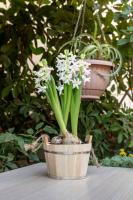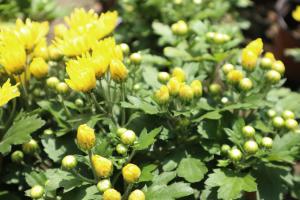Introduction
When planning to plant Satsuma trees, one critical question that arises is how far apart to space them. Proper spacing ensures that the young trees have enough nutrients, light, and water to grow well and prevent overcrowding as they mature. This article aims to provide a comprehensive guide on how far apart to plant Satsuma trees.
Ideal Spacing for Satsuma Trees
Satsuma trees generally require a spacing of 10-12 feet apart, depending on the variety grown. The distance should be adequate to accommodate the trees' root system, height, and crown spread. If the trees are spaced too closely, their roots will compete for nutrients, resulting in stunted growth and poor yields. Additionally, overcrowded trees will develop thin canopies and are more susceptible to diseases and pest infestations.
Factors Affecting Satsuma Tree Spacing
Several factors can influence the spacing distance of Satsuma trees, including soil type, drainage, climate, and tree variety. Areas with fertile, well-drained soils can accommodate trees spaced more closely than poorly drained ones. In wetter regions, trees should be planted with enough space to reduce waterlogging and fungal infections. Satsumas grown in cooler climates may need more room to facilitate adequate sunlight and air circulation.
Planting Considerations
When planting Satsuma trees, it's advisable to avoid areas with a high-water table or soil that can quickly become waterlogged. Overwatering is a common mistake when planting citrus trees and can lead to root rot and reduced growth. The planting hole should be wide enough to accommodate the tree's roots, and the top of the root ball should be level with the ground to prevent air pockets.
Additionally, the soil should be well-draining, and any amendments should be thoroughly mixed before planting. Mulching around the tree's base can help retain moisture and prevent weeds from competing with the tree for essential nutrients.
Tree Care After Planting
After planting, it's essential to provide adequate care to ensure the tree establishes well. Regular watering, fertilization, and pruning can help maintain the tree's health and growth. Watering should be deep and infrequent, and the tree should be fertilized with a balanced granular fertilizer in the growing season. Pruning should focus on removing dead, damaged, or crossing branches to maintain an open canopy and promote adequate airflow.
Conclusion
In conclusion, proper spacing is essential when planting Satsuma trees. A spacing of 10-12 feet apart is ideal, depending on the variety grown and other factors such as soil type, drainage, and climate. By following the planting and care considerations outlined in this guide, you can enjoy healthy, thriving Satsuma trees that produce bountiful yields.

 how many times do yo...
how many times do yo... how many planted tre...
how many planted tre... how many pine trees ...
how many pine trees ... how many pecan trees...
how many pecan trees... how many plants comp...
how many plants comp... how many plants can ...
how many plants can ... how many plants and ...
how many plants and ... how many pepper plan...
how many pepper plan...






























